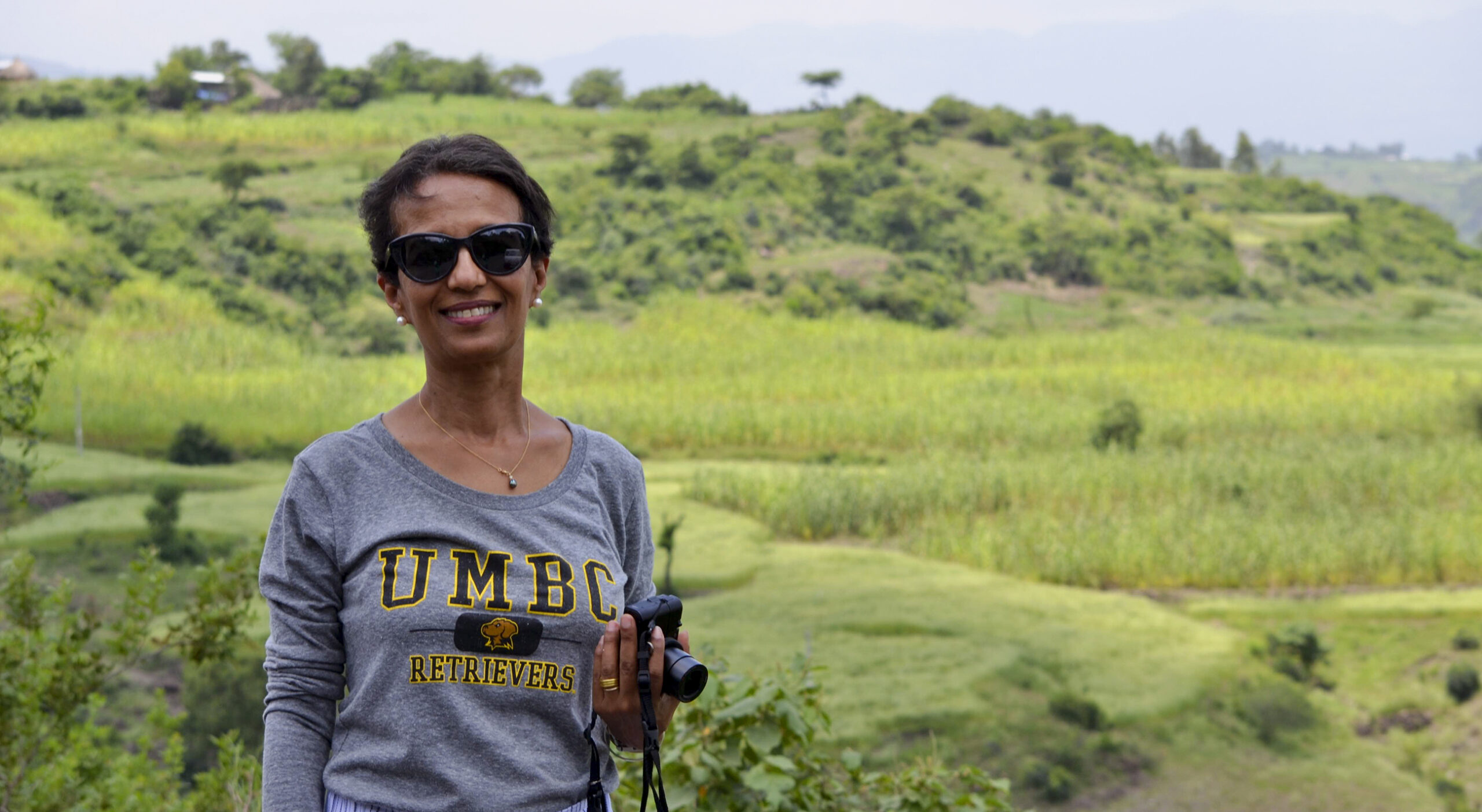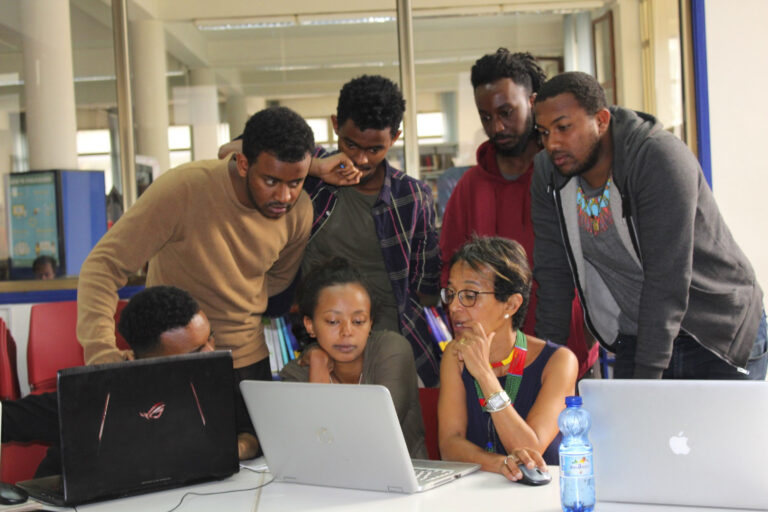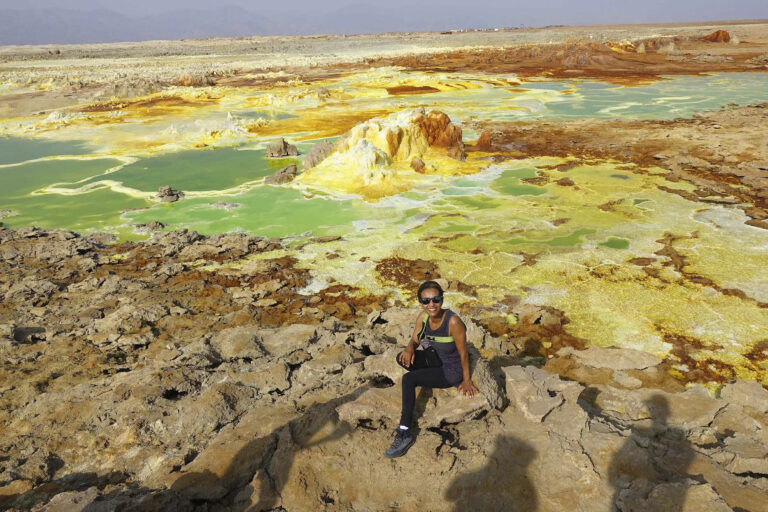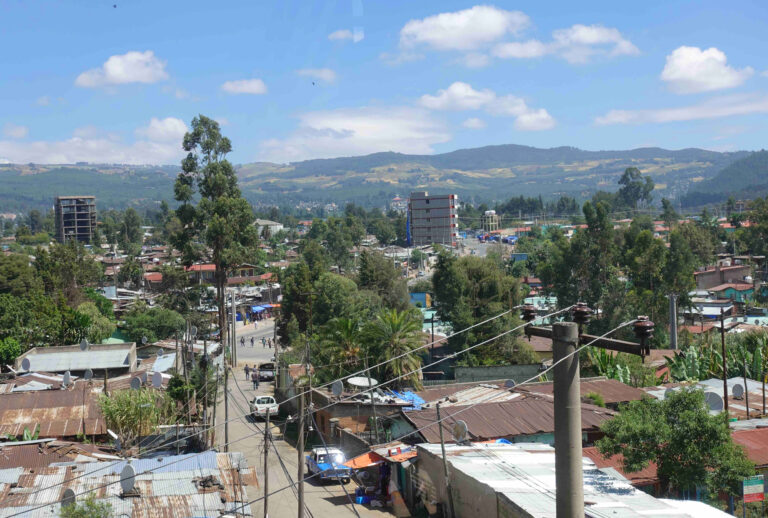Guenet Abraham, associate professor of graphic design, who received a 10-month Fulbright for 2017 – 2018 to teach graphic design and conduct research in Ethiopia for an upcoming multimedia exhibition, will extend her stay with the support of an additional Fulbright award for 2018 – 2019. She will continue teaching at the Alle School of Arts and Design at Addis Ababa University as well as conduct her research, which has taken her to the far reaches of the country.
The design courses Abraham has developed for the school, including a course in typography, are pilot courses aimed to help introduce a full graphic design curriculum. Her work includes direct instruction of students and mentoring of faculty. The curriculum will address the needs of university students well-placed to contribute design skills in the many sectors of Ethiopia’s growing economy.
“It is going very well in spite of challenges I am not used to in my teaching activities,” says Abraham, noting that there is no wifi in classrooms, many students do not own their own laptops, and there are limitations in computer lab facilities. “Despite these roadblocks, the students have universally embraced the course material. I am pleased to say that they continue to surpass my expectations. This has allowed me to continue to expand the learning goals.”
The additional year afforded through the second-round Fulbright will enable Abraham to continue teaching and working with faculty to draft a program that will continue long after the end of her stay.
In addition to teaching, Abraham is using the time in Ethiopia to research the rise and rule of The Coordinating Committee of the Armed Forces, Police, and Territorial Army – later named Derg – the brutal military regime that ruled Ethiopia from 1974 – 1992. Her historic and artistic research will culminate in a multimedia exhibition, Labyrinth of Memory, at the Center for Art, Design and Visual Culture (CADVC) when she returns.
The exhibition will present a depiction of the political violence, displacements, and disfigurements exacted by the Derg “for public consumption and debate,” as Abraham put it. “It stems from my belief that artists have the unique skills to address sensitive topics in ways that encourage contemplation and create dialogue. The trauma that Ethiopian society has faced is documented in tomes, but there are few monuments, exhibitions, explorations, and interpretations. The tragedies cannot be left to languish in archives or filed away in governmental reports. They must be given a proper place in the public’s memory.”
Her research has led her to explore many regions, such as sulfur lake in Dalol, Danakil Depression, to juxtapose natural and contemporary sound and imagery against the horrors of the Derg period.
Abraham’s extended stay in Addis is also a return. As civil war erupted, she departed with her family in 1974 and escaped the extreme violence that followed. “Since I left, the country has gone through two major regimes, the first one being the communist government of Mengistu which fractured the social fabric of the country. Soon after the present government toppled the Mengistu’s regime in 1991, the country split in two (Ethiopia and Eritrea) in 1992.”
The whole population of Ethiopia before the split was about 26 million, 450,000 in Addis Ababa. Now Ethiopia’s population is close to 100 million with over 6 million in Addis Ababa. “I simply do not recognize the country,” says Abraham. “The city is completely new and so are many aspects of the culture.”
Abraham also shared the unexpected feeling of “otherness” she has experienced in navigating a country that is both an old home and new place. It is not unlike what she encountered as a new American, she describes. Her approach has been to focus on the present rather than searching for what she remembers, she explains, saying, “I continue to immerse myself in the culture of today.”
Images, from top: Guenet Abraham in the Ethiopian highlands, photo by Teddy Berhanu; Guenet Abraham with students, photo by Fitsum Seyoum; Guenet Abraham at the sulfur lake in Dalol, Danakil Depression, photo by Colton Flynn; Addis Ababa, Ethiopia, photo by Guenet Abraham.
Tags: CADVC, CAHSS, Fulbright, International Stories, VisualArts




